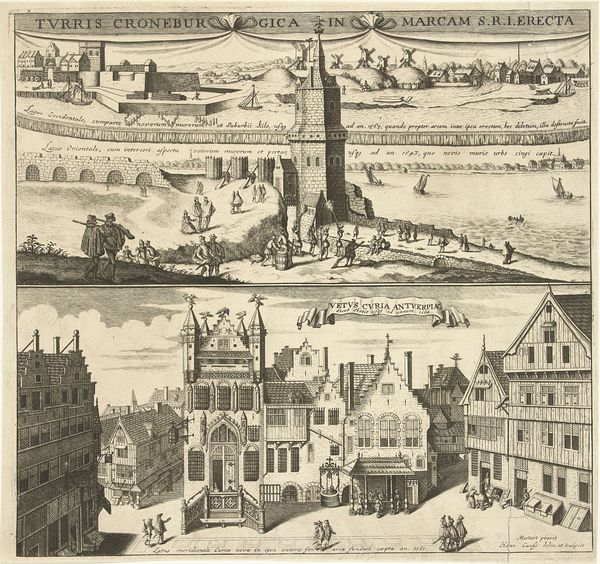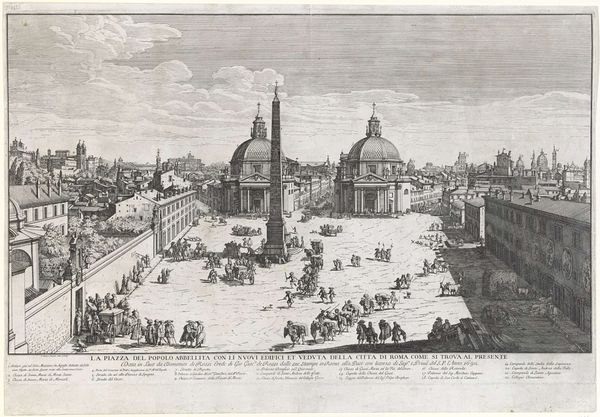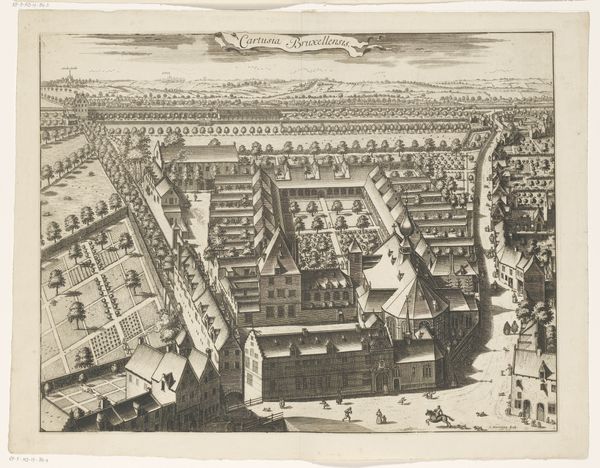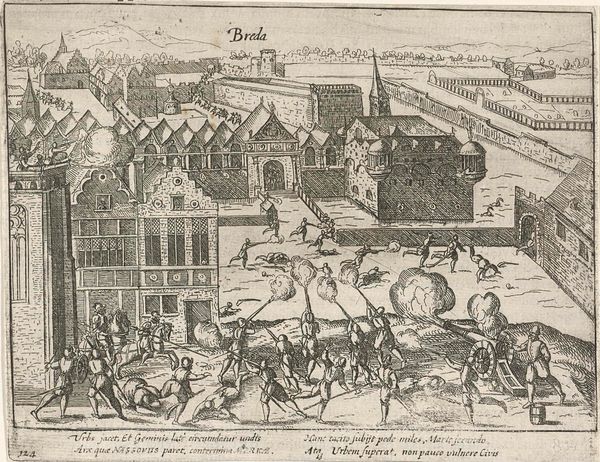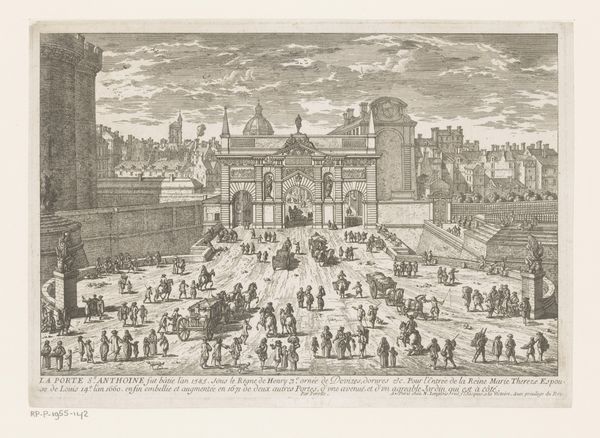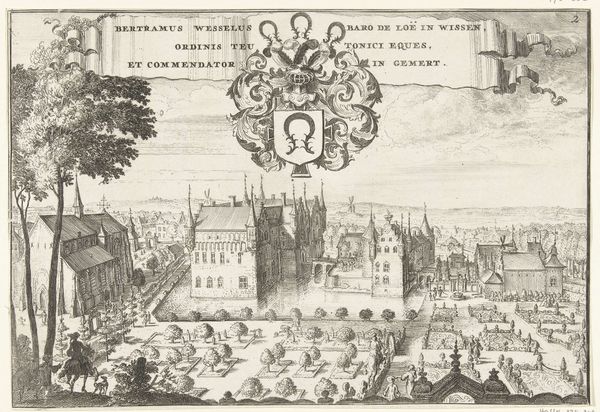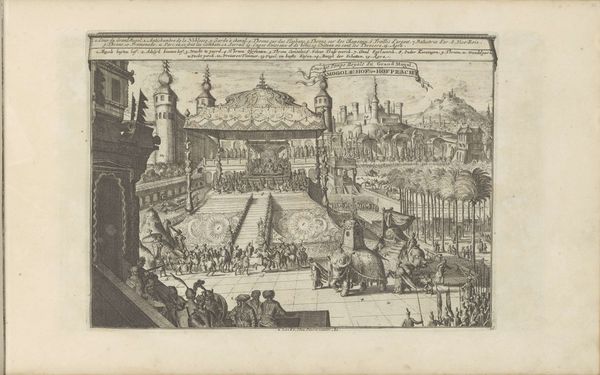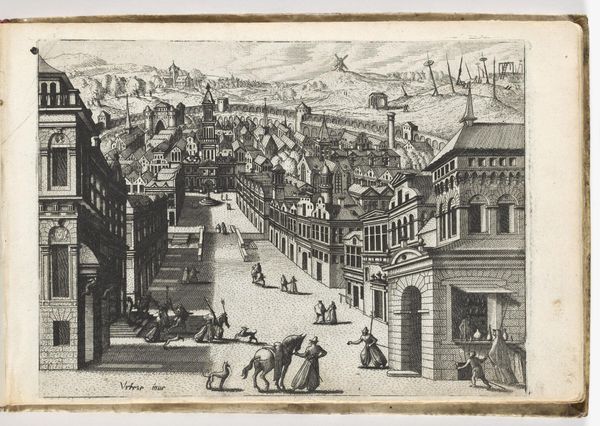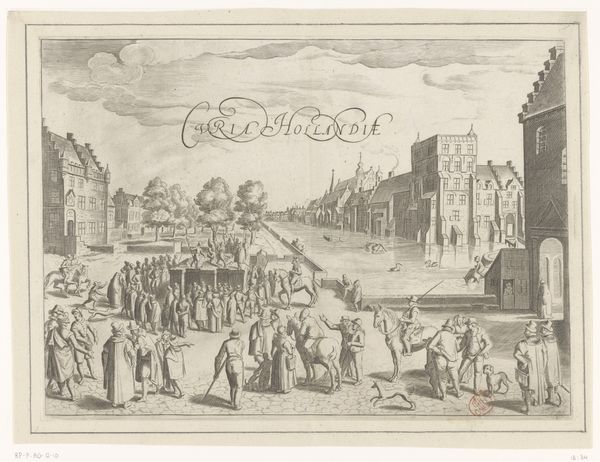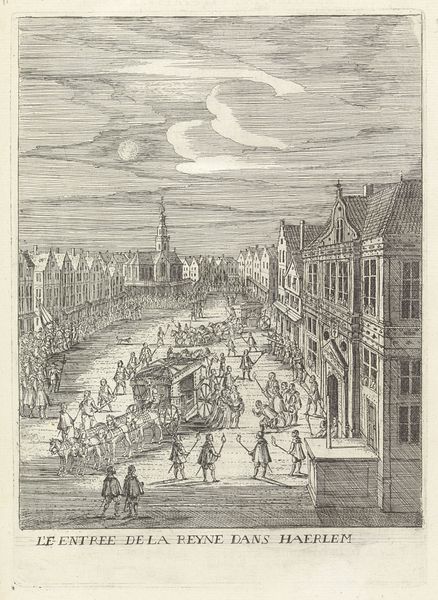
drawing, ink, engraving, architecture
#
drawing
#
pen drawing
#
dutch-golden-age
#
landscape
#
ink
#
engraving
#
architecture
Dimensions: height 413 mm, width 537 mm
Copyright: Rijks Museum: Open Domain
Editor: This is "Prinsenhof in Kleef," a pen and ink drawing and engraving by Romeyn de Hooghe, dating roughly from 1685 to 1695. It depicts a large estate. The precision and detail in the rendering of architecture and figures is striking, it seems like an almost photographic depiction of the site, albeit in monochrome! What do you see when you look at this work? Curator: I'm drawn to consider the social dynamics and modes of production encoded within this image. This isn't just a rendering of a place; it's a representation of power, wealth, and labor. Consider the meticulous engraving technique: the repetitive actions, the skilled labor involved in translating a lived reality into this consumable image. Editor: Consumable? Curator: Absolutely! This print, made using ink and engraving tools, likely circulated among a specific class. How does this image function as a commodity representing Dutch Golden Age opulence and, implicitly, the labor required to sustain it? Editor: I guess I hadn’t thought about the workers who maintained the estate, and how their work is somewhat hidden, while this idealized image becomes what’s consumed. Curator: Exactly! De Hooghe doesn't simply record the landscape; he participates in constructing an idea about this space through the careful selection of details and the material process of image-making. The precise lines weren’t made easily, someone laboured for these details. What effect do those details have on you? Editor: I see. Focusing on the materials and the process makes me consider whose story is told – and whose is omitted – when art is made. Curator: Indeed. By focusing on the materials, their origins, and how labor transforms them, we can critically examine what stories this image truly tells about this period and culture. Editor: Thanks, it really shifts my perception of the drawing. It becomes so much more than just a landscape, opening questions around value, labour, and the consumption of status.
Comments
No comments
Be the first to comment and join the conversation on the ultimate creative platform.
